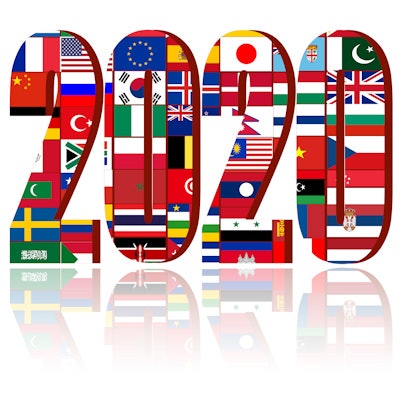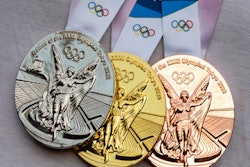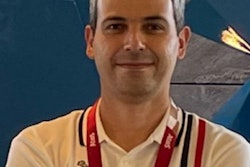
The Tokyo 2020 Olympics are now less than a year away, and specialists in orthopedics rather than medical imaging are most likely to play the preeminent role in the polyclinic, according to a senior Japanese radiologist.
In Japan, orthopedic experts are exceptionally strong, and sports medicine doctors with a background in orthopedics probably will manage most injuries incurred by athletes at the games, Prof. Manabu Minami from the department of diagnostic and interventional radiology at University of Tsukuba Hospital told AuntMinnieEurope.com. He wasn't aware of any radiologists who are currently due to work at the event, which starts on 24 July and ends on 9 August.
One European who is guaranteed to play a vital part in decision-making at Tokyo 2020 is Prof. Uğur Erdener, chair of the Medical and Scientific Commission and vice president of the International Olympic Committee (IOC). At an IOC meeting in May 2019, he was reelected until the end of 2024, even though he will reach the maximum age limit of 70 in 2020.
 Ophthalmologist Prof. Uğur Erdener will remain as the Olympic medical boss until 2024.
Ophthalmologist Prof. Uğur Erdener will remain as the Olympic medical boss until 2024.For most of his career, Erdener has worked as a physician and faculty member at the School of Medicine of Hacettepe University in Turkey. He became a professor of ophthalmology in 2001, specializing in oculoplastic surgery, and then served as general director and CEO of Hacettepe University Hospitals. He has received praise for his work as the representative of the Olympic Movement in the World Anti-Doping Agency.
Weather worries
The medical services at Tokyo 2020 look set to be kept very busy due to the unpredictable weather conditions.
Deadly heat and typhoons are a major concern for the organizers of the Tokyo Games, warned an article posted by the Japan Times on 30 July. Sports bodies are using every resource at their disposal to prepare athletes and spectators for extreme conditions, and they have turned to a weather forecasting company to give them firsthand meteorological data in a bid to understand what to expect during the Tokyo Olympics and Paralympics.
"The weather cannot be changed -- there's absolutely nothing we can do about it. What it comes down to is how well athletes prepare for it," Kazuo Asada from Weathernews told the Japan Times.
A historic heat wave hit Japan for two months last summer, resulting in more than 130 deaths and around 70,000 hospital admissions. The city of Kumagaya in the Saitama prefecture logged a record temperature of 41.1° C (106° F).
Asada's team has been working around the clock to support about 10 Japanese sports bodies with athletes competing in Olympic events, including the marathon, race walking, the triathlon, and sailing -- sports that are very much at the mercy of the weather.
The weather gurus have provided the sports bodies with information on what the weather has been like for the past two decades near competition venues. They have also made several visits to the venues during the summer to collect data, including temperature, humidity, and wind direction at given points.
Temperatures so far this summer have been much lower due to overcast and wet weather, highlighting the unpredictability of conditions. The average temperature from 1 to 25 July 2019 was 22.7° C (73° F), compared with 28.3° C a year earlier.
"Knowing the weather doesn't directly lead to winning. It's really up to how it is utilized by teams," Asada told the Japan Times. "It's one of those things that, if used the right way, can help give athletes a better time or a score, and improve their chances of claiming a medal."
Precautionary measures
Following the 2018 heat wave, the Olympic committee switched the starting times of several outdoor events. The men's and women's marathons were pushed ahead one hour to 6 a.m. to mitigate the heat, while the men's 50-km race walk will commence at 5:30 a.m.
The organizers plan to provide information about weather conditions and safety precautions through the official mobile app. They are also considering allowing spectators to bring their own bottled beverages into event venues.
The Tokyo Metropolitan Government is also taking action. It has installed a special coating of reflective material over 136 km of streets in the city center, and it also plans to install tents, fans, and mist sprayers at test events this summer.
"We are seriously concerned about it," Dr. Kimiyuki Nagashima, an executive board member of the Japan Medical Association, said last year. Athletes, officials, volunteers, and spectators are all at risk, and a spike in demand for emergency medical treatment would put a serious strain on local hospitals and ambulance services, he added.
Opposition to 'radioactive Olympics'
Another headache for the organizers are the activities of antinuclear organizations in Germany, Switzerland, France, and Japan, who have launched an international information campaign, "Tokyo 2020 - The Radioactive Olympics." Protesters are focusing on the ongoing radioactive contamination of parts of Japan due to the nuclear catastrophe of Fukushima.
Despite this opposition, the games look set to be as popular as ever. More than 7.5 million people in Japan registered for the first ticket lottery, making every event massively oversubscribed, according to a report in the Guardian newspaper. More than 90% of applicants are estimated to have come away empty‑handed in the first round in June, and two more rounds have been scheduled for later this year.
The organizers received a total of 204,680 applications to participate in the Tokyo 2020 volunteer program. Applicants had to apply between 26 September 2018 and 18 January 2019. Of the total, 64% were female and 36% male, and 64% were Japanese nationals. Training is due to begin in October 2019.
Editor's note: Look out for further reports on AuntMinnieEurope.com about the imaging of the 2020 Olympics over the coming months.


















